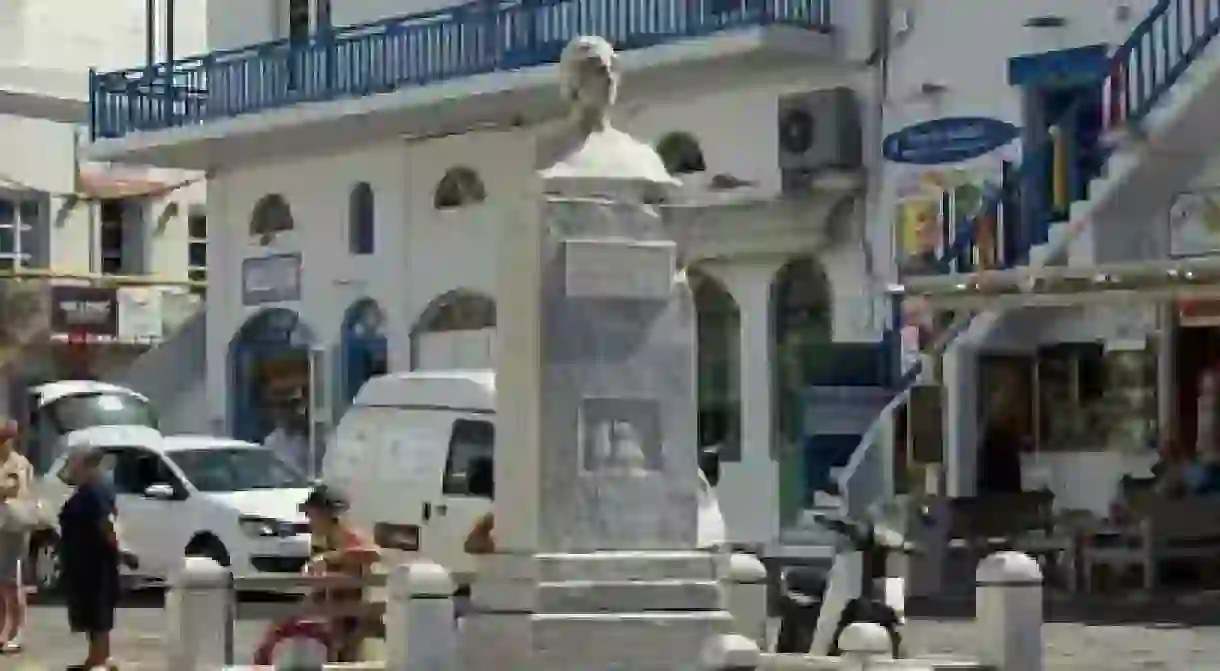Manto Mavrogenous: The Beautiful Female Commander Of Mykonos

At the end of the Old Port, at the Taxi Square, there is a sculpture of an elegant female figure. The cheerful groups passing by all day might miss her, but she watches over them and her beloved island with pride and love. Her name is Manto and in case you didn’t notice the writing beneath, she was an exceptional personality of the Greek Revolution.

La Bella Greca
Born on 1796 in Trieste, Magdalene ‘Manto’ Mavrogenous, was raised in a luxurious and politically liberal environment. Her father was a child of a well-known Cycladic family and a wealthy merchandiser abroad. Her mother was from Mykonos, spoke many languages and managed her husband’s activities. Manto received a higher education and was taught the French, Italian and Turkish languages. The young girl was nourished by the ideals of the Enlightenment and obtained a European way of thinking and acting, very different from those of other girls of her age back on Greece, the homeland of her parents.

Not only was she intelligent, polyglot and cosmopolitan, but also had, as historians of that time have written, a unique beauty and charm. ‘La bella Greca’ she was called in her social appearances. But as Manto was growing, the idea of liberation was also growing in Greece. Her father started sponsoring the leaders of these attempts, while Manto spoke with passion to her fellow Europeans about the Independence of Greece, spreading a spirit of compassion and support for the country among her social circles.

A Brave Woman In Action
The death of her father in 1818 forced Manto and her mother move to the island of Tinos to be with their relatives. There is where they would also meet the breakout of the Greek Revolution.
In December 1821 Manto arrived at Mykonos to take part in the rise of the people of the islands against the Ottomans. At her own personal expense she manned the Greek ships, equipped the navy with arms and paid for the training of local people in the revolutionary forces. All her family fortune was given to serve the war of liberation. Manto herself participated in various operations against the Ottomans.
An important note: her presence in battle seems to have been quite silenced by Greek historians. However, European writers and other Greece-affiliates credited her participation in operations in Karistos, Livadia, Pilio and Fthiotida in their testimonies.

Love And The Revolution
During this period, Manto met many important politicians and ambitious leaders. Dimitrios Ypsilantis, brother of the prince Alexander Ypsilantis and brave fighter, was one of them but turned out to be the special one. Manto felt in love with him and had no intentions of hiding their relationship, provoking the conservative morals of the society of that time. Gossip spread about them, poisoning their happiness. In order to put an end to all the rumors saying that the young leader ran after the “fake Mykonian woman” Dimitrios promised to marry her once conditions improved. This never happened. Various political men of the country opposed the possible marriage of Manto and Dimitrios, which would unite two powerful families of a pro-Russian orientation. Ioannis Koletis conspired against her, spread rumors about her having an affair with another man and tried to send her back to her island.
Manto and Dimitrios broke up and her love for him turned into hate. She moved to Paros with a broken heart, no money and without any recognition. While her ending may have been tragic, her exciting life story and contribution to the Greek Revolution is worth remembering.













